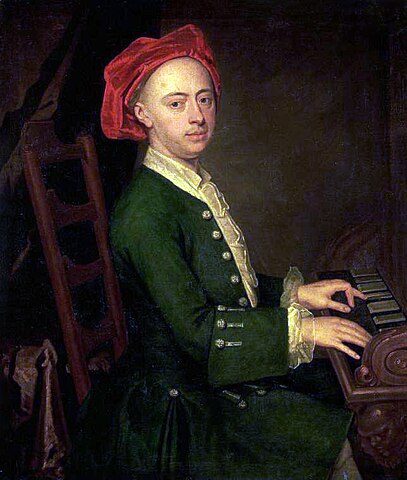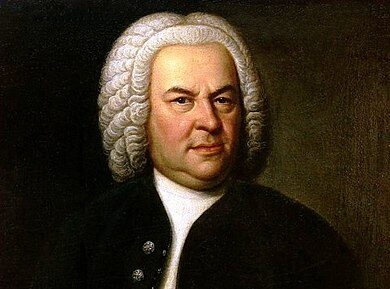The baroque period is generally considered to span from about 1600 to 1750. It was a time of great musical innovation and experimentation, as composers and musicians explored new forms, genres, techniques and instruments. The word “baroque” comes from the Portuguese word “barroco”, meaning “misshapen pearl”. It was originally used as a derogatory term to describe the elaborate and extravagant style of art and music that emerged in Europe during this time. However, today we appreciate the beauty and richness of baroque music, which reflects the cultural, political and religious diversity of the era.
If you are interested in Classical music, you might have heard of the term “baroque”. But what does it mean and why is it important? In this blog post, we will explore the baroque period of classical music, its main characteristics, composers and works, and its influence on later musical styles.
One of the most distinctive features of baroque music is the use of basso continuo, a type of accompaniment that consists of a bass line played by one or more instruments (such as cello, viola da gamba or double bass) and a chordal part played by another instrument (such as harpsichord, organ or lute). The basso continuo provides a harmonic foundation for the melody, which is usually played by a solo instrument (such as violin, flute or oboe) or sung by a voice. The basso continuo also allows for improvisation and variation, as the chordal part is often not written out in full but indicated by figured bass, a system of symbols that show the intervals above the bass note.

A Composition of Johann Sebastian Bach
Another characteristic of baroque music is the use of contrapuntal texture, which means that two or more independent melodic lines are combined in a harmonious way. Contrapuntal music can create complex and intricate effects, such as canons (where one melody is repeated by another voice or instrument at a fixed interval), fugues (where one melody is introduced by one voice or instrument and then imitated by others in different keys), and inventions (where two melodies are developed through various techniques such as inversion, augmentation and diminution).
Baroque music also developed new musical forms and genres, such as opera, cantata, oratorio, concerto and sonata. Opera is a dramatic work that combines music, singing, acting and scenery. It originated in Italy in the late 16th century and became popular throughout Europe in the 17th and 18th centuries. Some of the most famous operas from the baroque period are Monteverdi’s L’Orfeo (1607), Purcell’s Dido and Aeneas (1689), Handel’s Giulio Cesare (1724) and Rameau’s Les Indes Galantes (1735). Cantata is a vocal work that consists of several movements, usually with soloists, chorus and orchestra. It often has a religious theme and was performed in churches or at special occasions. Some of the most prolific composers of cantatas were Bach, who wrote over 200 cantatas for various occasions, Telemann, who wrote over 1000 cantatas for different churches, and Scarlatti, who wrote over 600 cantatas for various patrons. Oratorio is similar to opera but without costumes, scenery or acting. It usually has a biblical or historical subject and was performed in concert halls or theatres. Some of the most famous oratorios from the baroque period are Handel’s Messiah (1741), Bach’s St Matthew Passion (1727) and Vivaldi’s Juditha Triumphans (1716). Concerto is a musical work that features a solo instrument or a group of solo instruments accompanied by an orchestra. It usually has three movements: fast-slow-fast. The concerto was popularized by Italian composers such as Corelli, Vivaldi and Albinoni, who wrote hundreds of concertos for various instruments such as violin, oboe, trumpet and flute. Some of the most well-known concertos from the baroque period are Vivaldi’s The Four Seasons (1723), Bach’s Brandenburg Concertos (1721) and Pachelbel’s Canon in D (1680). Sonata is a musical work that consists of several movements for one or more instruments. It can be either solo or accompanied by basso continuo. The sonata was developed by Italian composers such as Caccini, Frescobaldi and Rossi, who wrote sonatas for voice, keyboard and strings. Some of the most famous sonatas from the baroque period are Bach’s Sonatas and Partitas for Solo Violin (1720), Scarlatti’s Keyboard Sonatas (1738-1757) and Buxtehude’s Sonatas for Violin, Viola da Gamba and Harpsichord (1694-1707).

George Frideric Handel | Baroque Period Composer
Baroque music had a profound impact on the later periods of classical music, such as the classical and romantic periods. It influenced the development of musical forms, genres, techniques and styles, as well as the expression of emotions, moods and characters. Some of the composers who were inspired by baroque music include Mozart, Beethoven, Schubert, Chopin, Brahms, Wagner and Debussy.
Some of the famous music pieces composed by them are:
- Bach: The Brandenburg Concertos, The Well-Tempered Clavier, The Goldberg Variations, The St Matthew Passion, The Mass in B minor
- Handel: Messiah, Water Music, Music for the Royal Fireworks, Zadok the Priest
- Vivaldi: The Four Seasons, Gloria, L’estro armonico
- Monteverdi: L’Orfeo, Vespro della Beata Vergine, L’incoronazione di Poppea
- Purcell: Dido and Aeneas, Music for the Funeral of Queen Mary, The Fairy-Queen
- Lully: Armide, Le bourgeois gentilhomme, Te Deum
- Rameau: Les Indes galantes, Castor et Pollux, Zoroastre
- Corelli: Concerti grossi Op. 6, Trio sonatas Op. 3 and Op. 4, Violin sonatas Op. 5
- Scarlatti: Keyboard sonatas K. 1–555
The baroque period music has impacted the later periods in many ways. Some of the innovations and developments of the baroque period include:
- The creation of common-practice tonality, an approach to writing music in which a song or piece is written in a particular key
- The establishment of mixed vocal/instrumental forms of opera, cantata and oratorio and the instrumental forms of the solo concerto and sonata as musical genres
- The expansion of the size, range, and complexity of instrumental performance and the orchestra
- The experimentation with finding a fuller sound for each instrumental part
- The changes in musical notation (the development of figured bass as a quick way to notate the chord progression of a song or piece)
- The development of new instrumental playing techniques
- The expectation of professional musicians to be accomplished improvisers of both solo melodic lines and accompaniment parts
Baroque music is a fascinating and diverse field of study and enjoyment. It offers a glimpse into the history, culture and art of a remarkable period in human history. It also showcases the creativity, skill and genius of some of the greatest composers and musicians of all time. If you want to learn more about baroque music, you can listen to recordings, watch performances, read books or articles, or even play or sing some of the pieces yourself. You will discover a world of beauty, elegance and wonder that will enrich your life and your appreciation of music.
Images: Public Domain

Johann Sebastian Bach | Baroque Period Composer
MusicLesson.In is a top standard online music academy from India. At our online studio, students and tutors from different geographical backgrounds share a vibrant online community thriving with musical artistry, practical expedients, structural learning methods, also emphasizing out-of-the-box creative opportunities. At www.musiclesson.in our pledge is to provide a world-class music learning experience, and adequate knowledge on the subject to our students. We inspire the learners to love music and be passionate about what they are doing. Moreover, our digital lesson-booking system makes things extremely user-friendly, convenient, and easily accessible. Join us and experience thorough professionalism at www.musiclesson.in and visit our Facebook Page Here

